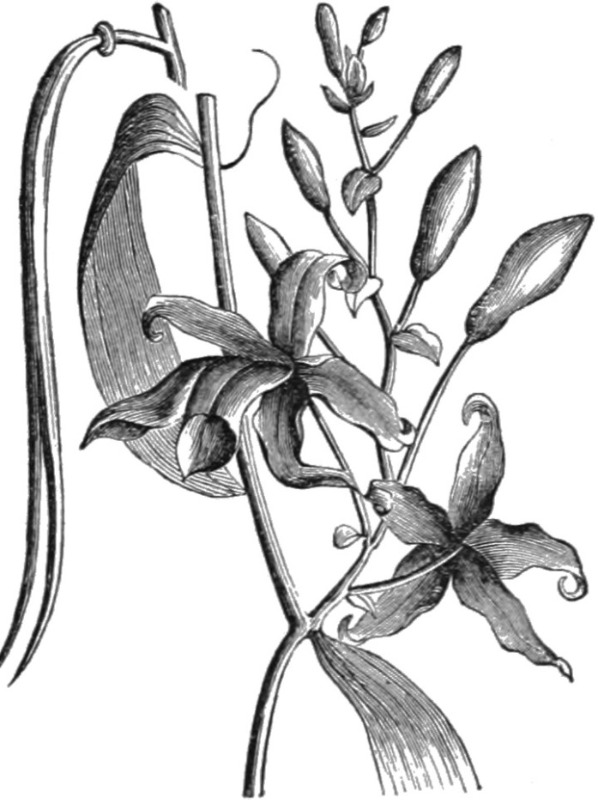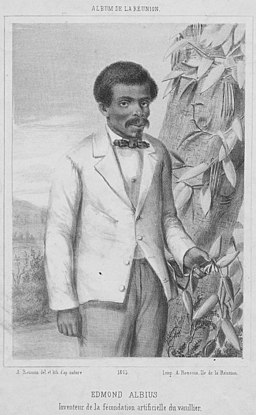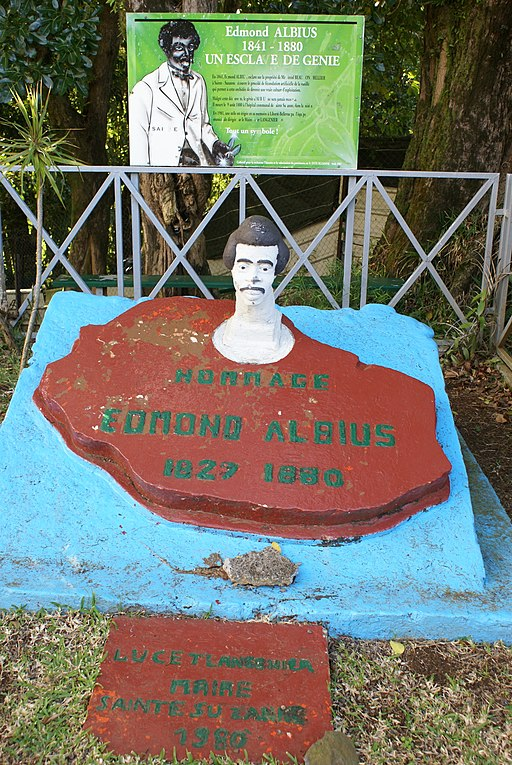Have you recently eaten a Vanilla Wafer? Or do you have tubs of Vanilla ice cream waiting for you in the freezer? Well, you have Edmond Albius to thank. Edmond Albius was a horticulturist born into slavery in Réunion. At the age of 12, he changed the Vanilla Industry forever when he discovered the best way to cultivate vanilla. His technique is still used to cultivate much of the vanilla in the world today.
Edmond Albius was born into slavery in 1829 on the island of Bourbon (modern-day Réunion). Réunion is an island off the coast of Madagascar and is considered an overseas state of France. Edmond’s mother had passed away during childbirth and he never knew who his father was. He was sent to work for Fereol Bellier Beaumont from who he learned horticulture and botany. During the 18th century, vanilla was a delicacy. It made its way into the palettes of the elite who used it for ice cream and as an aphrodisiac. It was even thought to have miracle properties which all drove the demand for this spice though the supply was unable to catch up. Cultivating vanilla was proving to be difficult outside of Mexico. In Mexico, the vanilla was pollinated by bees, but botanists were baffled how the bees did it. As such, it was almost impossible to cultivate vanilla without the bees. Vanilla is extracted from the fruits that come from the Vanilla Orchid. For the fruits to sprout there needs to be a pollinator.
This was true for Réunion. Vanilla was brought to Reunion and nearby Mauritius in 1829 but the vanilla was unable to strive as the vines were sterile because of the lack of pollinators. Beaumont was no exception, he had received 20 vanilla vines and in twenty years only one had survived. Despite its survival, it had yet to bear any flowers. The story goes that in 1841, Beaumont was walking around the orchid with Edmond when he saw that the surviving vine had fruits. Albius explained to him that he had found a way to pollinate them. Beaumont did not believe that Edmond was responsible until the fruits kept springing up. Beaumont asked Edmond to show him his technique. The technique was simple and genius. He used a stick or a grass blade and lifted the rostellum. The rostellum is the flap that separates the male anther from the female stigma and then uses his thumb to smear the pollen over the stigma.

Drawing of Vanilla Plant
The discovery changed the vanilla industry forever, breathing life into a dying industry on Réunion that would have been impossible to flourish without Edmond. Edmond was sent around the plantations to teach other slaves how to cultivate the vanilla. Cultivation of vanilla started to pick up on Réunion enabling them to outgrow production from Mexico. The French then took his technique and used it in Madagascar, which became and still is the world’s highest exporter of vanilla.

Edmond’s discovery had some kickback. Edmond was a slave and people were quick to try to and discredit him or pass off his achievements as their own. Jean-Michel-Claude Richard, a famed botanist at the time, tried to discredit Edmond Albius. He claimed that he had been the one who discovered the technique and that Edmond might have seen him when he came to Réunion. Beaumont disputed his claims, however, writing to the governor of the island conveying Richard’s claims not to be true. Edmond continued to face attacks. Papers would print about the discovery but would say that Edmond was white.
Slavery was abolished in Réunion in 1848. Despite Edmonds’s freedom, he received no monetary recognition for his contributions as the Vanilla Industry was taking off. Edmond moved to St. Denis where he found work as a kitchen boy. While he was working there, he was convicted of stealing and was sentenced to 10 years in jail. His sentence was reduced to 5 years when Beaumont wrote to the governor asking for clemency considering the contribution Edmond made to the Islands vanilla industry.
Not much is known about Albius’s life after his conviction, but he died in 1880 in Sainte-Suzanne, Réunion. The local paper Moniteur ran his obituary. It stated, “The very man who at a great profit to this colony, discovered how to pollinate Vanilla Flowers, has died in the public hospital at Sainte-Suzanne. It was a destitute and miserable end.”
Even though Edmond Albius died in 1880 never being properly recognized, through articles like this we can keep his memory and legacy alive. There is a statue of Edmond Albius in Sainte-Suzanne, yet, his name is not often brought up when discussing great contributors. So next time you grab your favorite vanilla ice cream or vanilla-scented perfume, remember the name Edmond Albius.

Powered by WPeMatico


